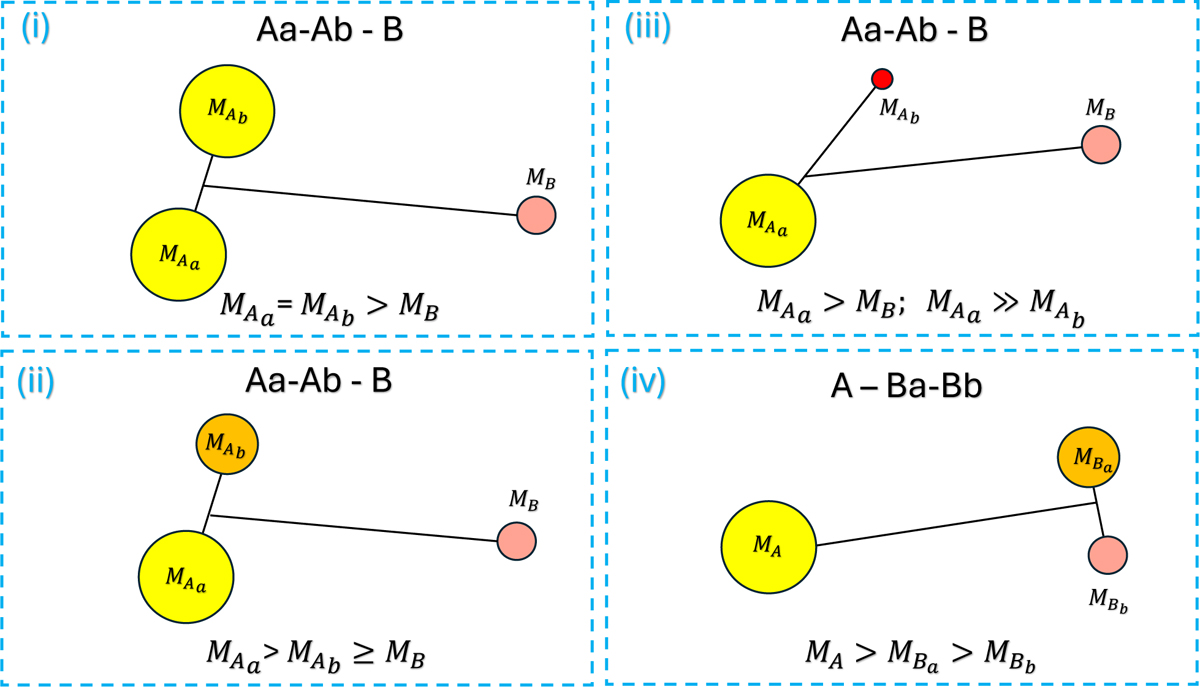Fig. 1

Download original image
Schematic representation of the four possible configurations of triple star systems considered in this study. The first configuration (top left; Aa-Ab-B) consists of a close twin binary ![]() with an outer astrometric companion. In this case, the inner binary has nearly equal-mass stars, but the lower mass of the outer companion makes it more challenging to detect astrometrically. The second configuration (bottom left), to which our method is most sensitive, involves a close binary, qin < 1, with an outer companion of lower mass. Here the inner binary’s spectroscopic signal is strong, while the outer companion dominates the astrometric signal. The third configuration (top right) is similar to the first two but with a significant mass ratio difference in the inner binary (qin ≪ 1), where one star is much more massive than the other, making it difficult to detect its RV variation. Lastly, the fourth configuration (bottom right) represents a system where the primary (brightest) star is single, and the outer companion is a close binary system of lower mass (A-Ba-Bb) that contributes significantly to the astrometric signal. Each configuration presents unique challenges for detection and analysis based on the mass distribution and orbital architecture.
with an outer astrometric companion. In this case, the inner binary has nearly equal-mass stars, but the lower mass of the outer companion makes it more challenging to detect astrometrically. The second configuration (bottom left), to which our method is most sensitive, involves a close binary, qin < 1, with an outer companion of lower mass. Here the inner binary’s spectroscopic signal is strong, while the outer companion dominates the astrometric signal. The third configuration (top right) is similar to the first two but with a significant mass ratio difference in the inner binary (qin ≪ 1), where one star is much more massive than the other, making it difficult to detect its RV variation. Lastly, the fourth configuration (bottom right) represents a system where the primary (brightest) star is single, and the outer companion is a close binary system of lower mass (A-Ba-Bb) that contributes significantly to the astrometric signal. Each configuration presents unique challenges for detection and analysis based on the mass distribution and orbital architecture.
Current usage metrics show cumulative count of Article Views (full-text article views including HTML views, PDF and ePub downloads, according to the available data) and Abstracts Views on Vision4Press platform.
Data correspond to usage on the plateform after 2015. The current usage metrics is available 48-96 hours after online publication and is updated daily on week days.
Initial download of the metrics may take a while.


